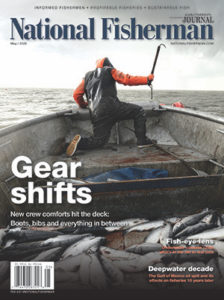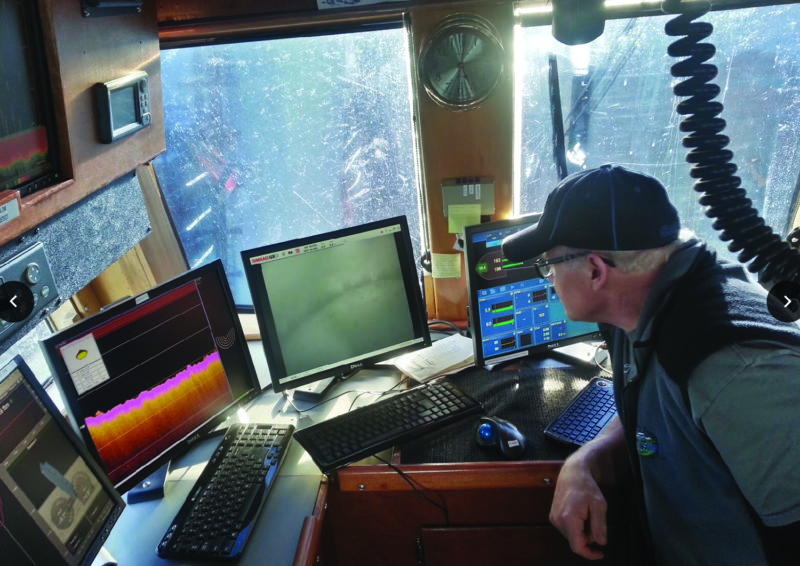Over hundreds of years of trawling, fishermen have worked blindly, damaging gear, catching what they don’t want to catch, and taking risks they don’t need to take. The best captains and deckhands developed a sixth sense for setting gear and knowing the bottom. Thanks to underwater trawl cameras, the days of guesswork are coming to an end.
Simrad has led the way with its FX80 live video catch-monitoring systems. According to Simrad engineer David Barbee the company has been putting live cameras together with sonar in nets since 2012. “This is a system that uses standard 11-mm coaxial cable (or equivalent) to send power and telemetry to sensors on the fishing net.” Barbee notes that the majority of the FX80-equipped factory trawlers are making use of the system to reduce bycatch and improve fishing effort.
“Bycatch reduction helps us fish longer in certain areas,” says Barbee. “In our Alaskan and West Coast fisheries, bottom trawlers must reduce halibut bycatch, and pollock semi-pelagic trawlers must reduce salmon bycatch. Both must know exactly how much of some species of rockfish they have left to catch.” Barbee notes that rockfish bycatch is a particular concern for the Pacific whiting pelagic fishery off the West Coast. “There’s certain species they need to avoid, and with this system they can see the patches of color on the fish.”

Read the rest of the story for free online in our May issue — no paywall — just click here to download or view on screen.
Barbee spends time fishing with the boats that buy the Simrad system and has seen how the company’s product performs in the field. “I think most captains are using this to improve their performance. If, say, they get hung on a rock and they can see the bobbins take the foot rope over it, they can keep fishing,” Barbee says. “Nobody has quantified the time this saves in little things like that.
"Another time I was on a boat and we could see a bunch of starry flounder lining up in front of the net. Starry flounder stick together and create a big ball in the net, making them very difficult to process. We pulled our net and avoided them. The boat next to us ended up with a net full and spent nine hours dealing with the damage to their excluder and net.”







